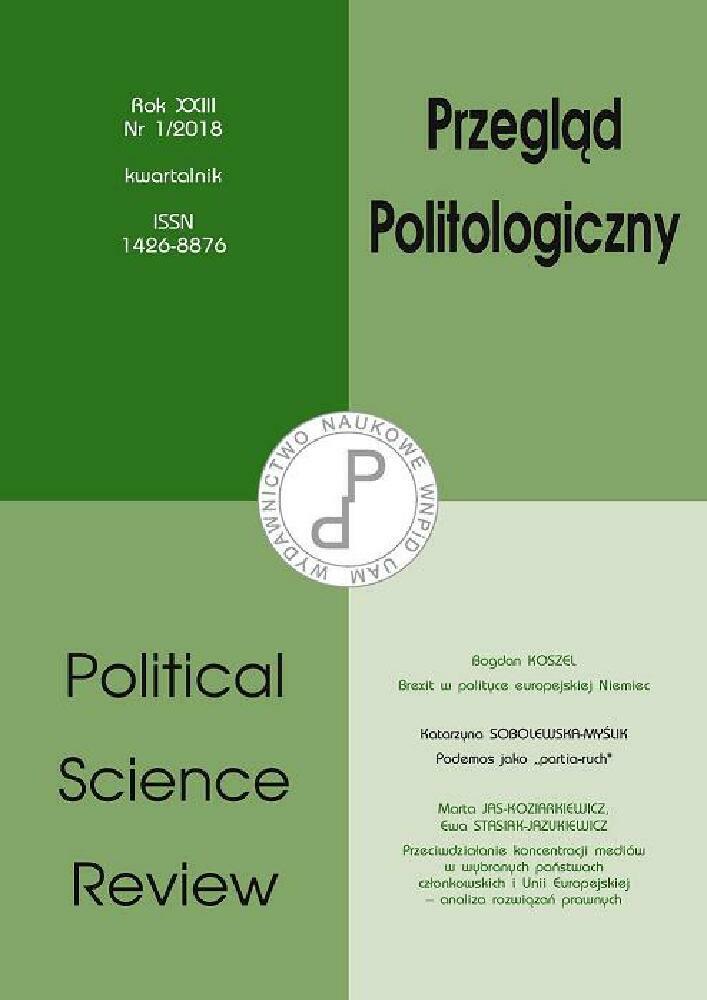Abstrakt
The objective of the Energy Union is to integrate 28 national energy markets, guarantee free movement of energy through the borders of the member states, implement new technologies, increase energy efficiency and renew transmission infrastructure. This project is advocated in response to the energy crisis of 2009, between Russia and Ukraine, as a result of which the gas transit to some of the EU countries was discontinued. This project, however, does not enjoy equal interest among all EU member states. This is the outcome of the national interests of some member states, which, for many years, have had good political and economic relations with the Russian Federation, particularly in the area of energy raw materials. Therefore, Maroš Šefčovič – the European Commissioner in charge of the Energy Union, organised an Energy Union Tour, i.e. a series of meetings in all the member states, taking place at the turn of 2015–2016, the objective of which was to show what the Energy Union could offer each of them. The structure of the paper was determined by the research procedure and the response to all the research questions, comprising: introduction, reflections on the security of the energy raw material supply and the projects of Energy Union and Energy Union Tour as well as the conclusions from the research and the summary.
Bibliografia
Aalto P. (2016), The EU-Russian Energy Dialogue: Europe’s Future Energy Security, Routledge, Taylor & Francis, London–New York.
Benefits of the Energy Union – country factsheets, http://ec.europa.eu/priorities/publications/benefitsenergy-union-country-factsheets_en, 03.10.2016.
Buchan D., Keay M. (2016), Europe’s Long Energy Journey: Towards an Energy Union?, Oxford University Press, USA.
Complete Energy balances, http://appsso.eurostat.ec.europa.eu/nui/show.do?dataset=nrg_110a&lang=en, 03.10.2016.
Energy production and imports, Main statistical findings, http://ec.europa.eu/eurostat/statisticsexplained/index.php/Energy_production_and_imports#Imports, 03.10.2016.
European Commission (2015a), ‘Energy Union Package, Communication From The Commission to the European Parliament and the Council, the European Economic and Social Committee, the Committee of the Regions and the European Investment Bank, A Framework Strategy for a Resilient Energy Union with a Forward-Looking Climate Change Policy’, COM(2015) 80 final, 25.2.2015.
European Comission (2015b) ‘Energy Union Package. Communication From The Commission to the European Parliament and the Council, The Paris Protocol –A blueprint for tackling global climate change beyond 2020 {SWD(2015) 17 final} Brussels’. COM(2015) 81 final, 25.2.2015.
http://www.rferl.org/contentinfographics/gazprom-russia-gas-leverage-europe/25441983.html, 05.10.2016.
http://forsal.pl/artykuly/901869,jak-bardzo-europa-jest-uzalezniona-od-gazu-z-rosji-mapa.html, 05.10.2016.
http://ec.europa.eu/priorities/energy-union-tour_en, 03.10.2016.
Pach-Gurgul, A. (2016a), Unia Energetyczna – nowy etap polityki energetycznej Unii Europejskiej? Finanse, Rynki Finansowe, Ubezpieczenia, 3(81), Wydawnictwo Naukowe Uniwersytetu Szczecińskiego Szczecin 2016.
Pach-Gurgul A. (2016 b), The Europeanisation of EU Energy Policy, w: Macro-, Meso-, and Microeconomic Dimensions of Europeanization, eds. P. Stanek, K. Wach, PWN.
